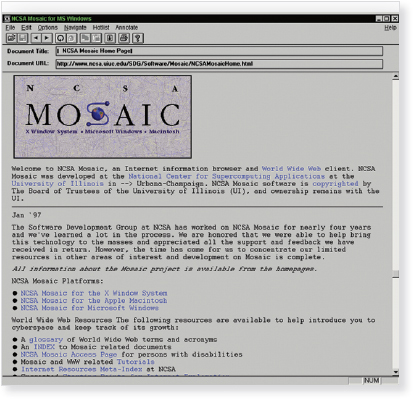Web 1.0
Printed Page 270
Internet use before the 1990s mostly consisted of people transferring files, accessing computer databases from remote locations, and sending e-mails through an unwieldy interface. The World Wide Web (or the Web) changed all of that. Developed in the late 1980s by software engineer Tim Berners-Lee at the CERN particle physics lab in Switzerland to help scientists better collaborate, the Web enabled users to access texts through clickable links rather than through difficult computer code. Known as hypertext, the system allowed computer-accessed information to associate with, or link to, other information on the Internet—no matter where it was located. HTML (HyperText Markup Language), the written code that creates Web pages and links, can be read by all computers. Thus computers with different operating systems (Windows, Macintosh, Linux) can communicate easily through hypertext. After CERN released the World Wide Web source code into the public domain in 1993, many people began to build software to further enhance the Internet’s versatility.

The release of Web browsers—software applications that help users navigate the Web—brought the Web to mass audiences for the first time. Computer programmers led by Marc Andreessen at the University of Illinois (a supercomputer center that was part of NSFNet) released Mosaic in 1993, the first user-friendly browser to load text and graphics together in a magazine-like layout. With its attractive fonts and easy-to-use navigation buttons, Mosaic was a huge improvement over previous technology. In 1994, Andreessen joined investors in California’s Silicon Valley to introduce another major advance—a commercial browser called Netscape. Together, the World Wide Web, Mosaic, and Netscape gave the Internet basic multimedia capability, enabling users to transmit pictures, sound, and video.